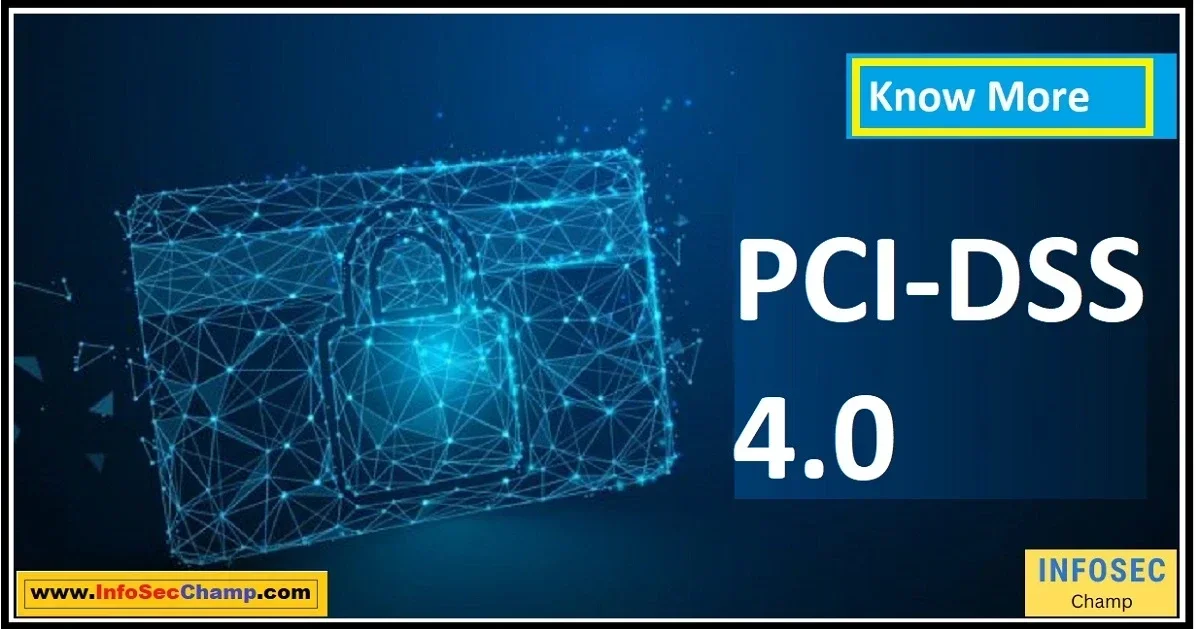With the rise of digital transactions, businesses need to ensure that they are protected from financial fraud and data breaches. This is where PCI-DSS 4 comes in. The Payment Card Industry Data Security Standard (PCI-DSS) is a set of security standards that all organizations that accept or process payment through credit, debit, or prepaid cards must comply with. PCI-DSS 4 is the latest version of these standards and has been designed to provide more comprehensive protection to businesses and their customers.
Complying with PCI-DSS 4 can be a daunting task, but it is necessary to protect your business from the devastating consequences of a data breach. In this ultimate guide, we will take you through everything you need to know about PCI-DSS 4, from the basics of compliance to the best practices to ensure your business is protected. With our easy-to-understand explanations and practical tips, you can safeguard your business and customers’ sensitive data, avoid hefty fines and legal action, and establish trust with your customers. So, read on to discover all you need to know about PCI-DSS 4 compliance!
What are the updated requirements for PCI-DSS 4 compliance?
The updated requirements for PCI-DSS 4.0 compliance encompass several key areas, including:
- Enhanced security objectives: Focus on the security of cardholder data, systems, and processes.
- Flexible compliance approach: Encourages organizations to adopt a customized, risk-based approach to implementing security controls.
- Emphasis on continuous security: Stresses the importance of ongoing security monitoring and maintaining a robust security posture.
- Updated security controls: Introduction of new controls to address emerging risks and evolving technology landscape.
- Increased focus on cloud environments: Specific guidance for securing cardholder data in cloud-based environments.
- Clearer roles and responsibilities: Enhanced definition of the roles and responsibilities for all stakeholders involved in the payment card ecosystem.
How does PCI-DSS 4 differ from previous versions?
PCI-DSS 4.0 differs from previous versions in the following ways:
- Flexibility: PCI-DSS 4.0 offers organizations more flexibility in implementing security controls tailored to their specific environment and risk profile.
- Emphasis on continuous security: The new version emphasizes the need for continuous security monitoring and maintaining a strong security posture, instead of periodic compliance assessments.
- Updated security controls: Version 4.0 introduces new controls to address emerging threats and technologies, such as cloud-based environments and advanced persistent threats.
- Clearer roles and responsibilities: The latest version provides clearer definitions of stakeholder roles and responsibilities, ensuring better collaboration and accountability in the payment card ecosystem.
What is the timeline for migrating to PCI-DSS 4 compliance?
The timeline for migrating to PCI-DSS 4 compliance typically involves the following milestones:
- Release of PCI-DSS 4.0: The official release of the updated standard.
- Transition period: A designated period during which organizations can transition from the previous version to the updated standard. This period typically lasts 18-24 months.
- End of support for the previous version: After the transition period, the previous version (3.2.1) will no longer be supported or accepted for compliance assessments.
- Ongoing compliance: Organizations are expected to maintain continuous compliance with PCI-DSS 4.0 after the transition period.
What are the penalties for non-compliance with PCI-DSS 4?
Penalties for non-compliance with PCI-DSS 4.0 can include:
- Fines: Financial penalties range from $5,000 to $100,000 per month, depending on the severity of the violation and the acquiring bank’s discretion.
- Increased transaction fees: Non-compliant merchants may face higher transaction fees from their payment processors.
- Suspension or termination of payment processing: In extreme cases, non-compliant merchants could lose the ability to process payment card transactions altogether.
- Reputational damage: Public disclosure of non-compliance can lead to loss of customer trust and potential business loss.
Are there any new security controls introduced in PCI-DSS 4?
PCI-DSS 4.0 introduces new security controls, including:
- Enhanced encryption: Strengthening of encryption requirements, including guidelines on the use of robust cryptographic algorithms and secure key management practices.
- Multifactor authentication: Expanded requirements for multifactor authentication, ensuring stronger access controls for systems that process, store, or transmit cardholder data.
- Cloud security: Specific guidance on securing cardholder data in cloud-based environments, addressing issues such as data segregation, encryption, and access controls.
- Continuous monitoring: Emphasis on the importance of continuous security monitoring, requiring organizations to establish processes for ongoing identification, assessment, and mitigation of security risks.
How does PCI-DSS 4 address emerging threats and risks to payment card data?
PCI-DSS 4.0 addresses emerging threats and risks to payment card data by:
- Updating security controls: Introducing new controls and refining existing ones to address evolving threats, such as advanced persistent threats and emerging technologies.
- Emphasizing continuous security: Encouraging organizations to maintain an ongoing security posture by regularly monitoring, assessing, and mitigating risks.
- Risk-based approach: Promoting a risk-based approach to implementing security controls, allowing organizations to focus on the most critical risks specific to their environment.
- Enhancing encryption: Strengthening encryption requirements to ensure the protection of cardholder data during storage and transmission.
- Addressing cloud security: Providing guidance for securing cardholder data in cloud environments, covering aspects like data segregation, encryption, and access controls.
In what ways does PCI-DSS 4 address cloud-based environments?
PCI-DSS 4.0 addresses cloud-based environments by:
- Providing specific guidance on securing cardholder data in the cloud
- Addressing challenges related to data segregation, ensuring appropriate separation between different customers’ data
- Emphasizing the importance of strong encryption for data storage and transmission in the cloud
- Defining clear roles and responsibilities for cloud service providers and their customers in the context of PCI-DSS compliance
- Encouraging organizations to perform risk assessments and implement security controls tailored to the unique risks associated with cloud environments
How can organizations prepare for the transition to PCI-DSS 4 compliance?
Organizations can prepare for the transition to PCI-DSS 4.0 compliance by:
- Familiarizing themselves with the updated standard and understanding the new requirements.
- Reviewing their current security posture and identifying gaps in compliance with the updated standard.
- Developing a plan to address identified gaps, prioritizing the most critical risks.
- Engaging stakeholders across the organization to ensure a collaborative approach to compliance.
- Implementing new security controls and refining existing ones as needed.
- Establishing continuous security monitoring and risk assessment processes to maintain ongoing compliance.
- Consulting with a qualified security assessor (QSA) or other experts to ensure a smooth transition.
What are the roles and responsibilities of all the stakeholders involved in PCI-DSS 4 compliance?
The roles and responsibilities of stakeholders involved in PCI-DSS 4.0 compliance include:
- Merchants: Implementing and maintaining PCI-DSS compliant systems and processes, reporting compliance status to acquire banks, and collaborating with service providers to ensure the security of cardholder data.
- Acquiring banks: Ensuring that their merchants are PCI-DSS compliant, providing support and guidance on compliance requirements, and reporting compliance status to payment card brands.
- Payment card brands: Establishing and maintaining the PCI-DSS standard, monitoring compliance across the payment card ecosystem, and imposing penalties for non-compliance.
- Service providers: Implementing PCI-DSS compliant systems and processes when handling cardholder data on behalf of merchants, and reporting compliance status to merchants and acquiring banks.
- Qualified security assessors (QSAs): Conduct independent assessments of organizations’ PCI-DSS compliance and provide expert guidance on achieving and maintaining compliance.
How will PCI-DSS 4 benefit consumers and the wider payment card ecosystem?
PCI-DSS 4.0 will benefit consumers and the wider payment card ecosystem by:
- Enhancing the security of cardholder data through updated security controls and requirements.
- Encouraging continuous security monitoring, which helps organizations maintain a strong security posture and respond more effectively to emerging threats.
- Promoting a risk-based approach to security, allows organizations to focus on the most critical risks specific to their environment.
- Addressing the unique challenges of securing cardholder data in cloud environments, ensuring better protection of consumer information in an increasingly cloud-centric world.
- Clarifying roles and responsibilities of all stakeholders, fostering collaboration and accountability within the payment card ecosystem.
Ultimately, increasing consumer trust in the security of payment card transactions, promoting greater adoption of electronic payments, and contributing to the overall growth of the payment card industry.
Is it recommended to engage a third-party assessor for PCI-DSS 4 compliance?
Engaging a third-party assessor, such as a Qualified Security Assessor (QSA), for PCI-DSS 4.0 compliance can be beneficial for organizations for the following reasons:
- Expertise: QSAs possess extensive knowledge and experience in PCI-DSS compliance and can provide expert guidance on implementing security controls, identifying gaps, and addressing risks.
- Objectivity: A third-party assessor can provide an unbiased perspective on an organization’s security posture and compliance status, ensuring a more accurate assessment.
- Efficiency: QSAs can streamline the compliance process by leveraging their experience with similar organizations, helping to identify common issues and best practices.
- Ongoing support: Many QSAs offer ongoing support and monitoring services, assisting organizations in maintaining continuous compliance with PCI-DSS 4.0.
- While engaging a third-party assessor can be beneficial, organizations should also ensure they have internal resources dedicated to managing PCI-DSS compliance. This includes developing a deep understanding of the standard, fostering a security-aware culture, and maintaining ongoing security monitoring and risk assessment processes.
Conclusion
PCI-DSS 4.0 is a significant update to the Payment Card Industry Data Security Standard, designed to address emerging threats and technologies in the rapidly evolving payment card ecosystem. It offers organizations increased flexibility in implementing security controls, emphasizes the importance of continuous security monitoring, and provides specific guidance for securing cardholder data in cloud environments.
Engaging a Qualified Security Assessor (QSA) and leveraging internal resources can help organizations navigate the transition to PCI-DSS 4.0 compliance smoothly. Ultimately, the updated standard aims to enhance the security of payment card transactions, benefiting consumers, merchants, and the entire payment card industry.

FAQ:
What is the main purpose of PCI-DSS 4.0?
The main purpose of PCI-DSS 4.0 is to enhance the security of payment card transactions by introducing updated security controls, emphasizing continuous security monitoring, promoting a risk-based approach, and addressing the unique challenges of securing cardholder data in cloud environments.
Do all organizations that process payment cards need to comply with PCI-DSS 4.0?
Yes, all organizations that store, process, or transmit payment card data are required to comply with PCI-DSS 4.0 to ensure the protection of sensitive cardholder information and maintain the trust of consumers and payment card brands.
When should organizations start preparing for PCI-DSS 4.0 compliance?
Organizations should start preparing for PCI-DSS 4.0 compliance as soon as the updated standard is released. They should familiarize themselves with the new requirements, identify gaps in their current security posture, and develop a plan to address these gaps in order to ensure a smooth transition during the designated transition period.
Golden Quote
“Continuous security, tailored controls, and risk-based approach – the pillars of PCI-DSS 4.0”


Very nic post. I absolutelyy appreciate tthis website. Keep writing!